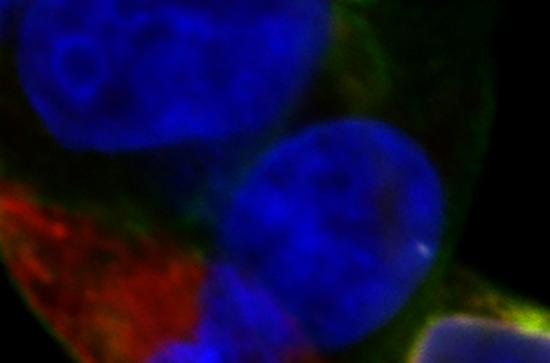
A ground-breaking new technique discovered by researchers at Maynooth University and Trinity College Dublin will for the first time allow scientists to analyse critical molecules at the heart of drug development without the use of radioactivity. The new research, published today in the internationally renowned journal Scientific Reports, will enable researchers to accurately measure the number of these “receptor” molecules without the significant cost and environmental risk implications associated with radiation.
A receptor is a protein-molecule, embedded in every cell membrane, that causes a change in cell activity when it receives chemical signals from an external source. Research into receptors has previously demonstrated that, amongst other activities, they have an integral role in controlling cellular multiplication in cancers. The receptor’s role in cell activity and the ease with which they bind with other molecules make them a principal target for pharmaceutical companies looking to develop new treatments with 50% of all drugs being designed to link with them.
Scientists typically measure cellular receptor numbers using radioactive probes that emit an easily detectable radioactive signal when in contact with receptor cells. This information plays a vital role in understanding how cells work and is crucial for the design and discovery of new drugs. The development of technique was a significant scientific breakthrough and earned Robert Lefkowitz the 2012 Nobel Prize in Chemistry. Leftowitz followed on from the research of Rosalyn Yalow who won the Nobel Prize in 1977 for using radioactivity to monitor insulin levels in the body. However, the radioactivity emitted by these probes poses a significant threat to human and animal life. As a result, stringent safety measures and legal restrictions are enforced both in the handling of radioactivity and in the disposal of radioactive waste.
Lead researcher Dr Conor Breen, Maynooth University Department of Biology, and his colleagues’ discovery is related to fluorescent probes, which emit light when in contact with receptor cells. Unlike radiation, the light signals emitted by these probes is no more harmful than a torch; however, to date, they have not have not had the same reliability in measuring receptor numbers, because of a variation in the amount of light they emit when they are delivered to cells. This variation is caused by a phenomenon known as fluorescence quenching.
The breakthrough for the team came when they showed that fluorescence quenching could be completely reversed by digesting the cells with an enzyme. Under these conditions, the fluorescence emitted by the probe yielded exactly the same quantitative information that radioactive probes can provide.
Commenting on this discovery, Dr Breen observed: “The discovery that radioactivity could be used to track molecules in the body was a huge achievement, and its impact on the scientific landscape cannot be overstated. However, while radioactivity will continue to play an important role in quantifying molecules in cells, the restrictive costs of managing and disposing of radioactive waste has up until now prevented smaller labs and individuals from undertaking cellular research. This breakthrough will empower countless researchers and we anticipate that it will unlock new avenues for researching, diagnosing, and treating human diseases.”
